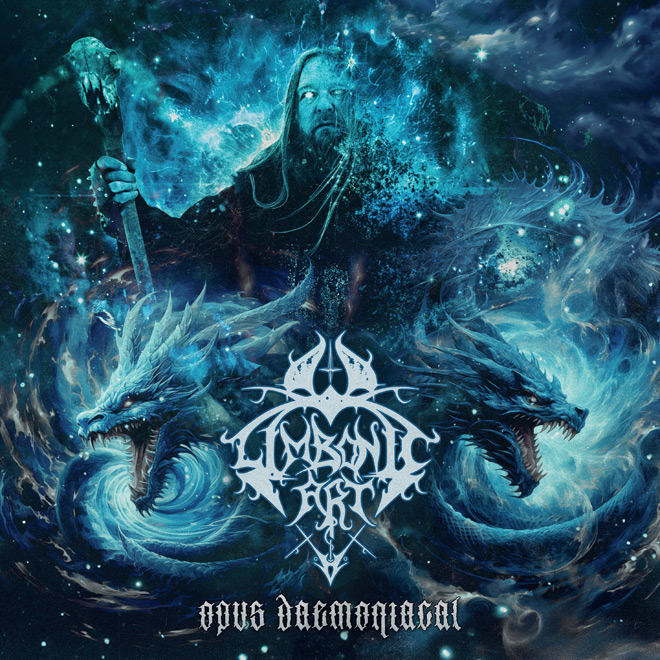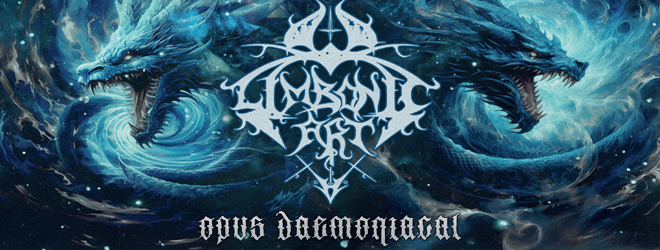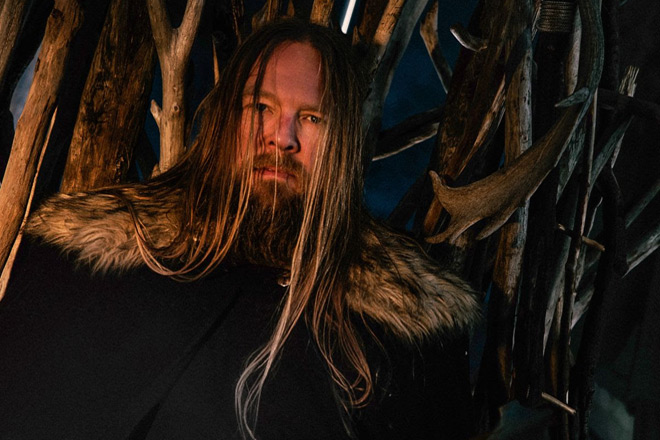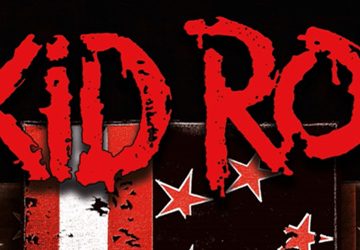Once at the forefront of the Symphonic Black Metal scene of the 1990s, Limbonic Art ramped down their studio efforts, and despite a few releases here and there, the Norwegian legends went dark for long periods of the last decade and a half. Now for the first time since 2017, the band emerges with their ninth studio album. Entitled Opus Daemoniacal, the life’s work of creator Vidar Jensen, aka Daemon, sees daylight on June 28, 2024 via Greek Avantgarde Black Metal label Kyrck Productions & Armour.
Fans of restlessly creative ’90s Black Metal will recall how the genre very rapidly branched out into stranger and stranger territory. Using a drum machine, the sprawling mystical glory of Limbonic Art’s 1996 debut Moon In The Scorpio and its 1997 follow-up In Abhorrence Dementia breathed torrents of darkness by combining the celestial horror of early Emperor with the hyper-industrial composition of bands like Mysticum.
Here in 2024, Daemon is once again composing without longtime collaborator Krister Dreyer (aka Morpheus). Now onto the third album composing alone, Daemon has unleashed something a bit more like those earlier Limbonic Art albums; albeit with a healthy dose of blustery heaviness bolstering the songs.
The album opens with “Ad Astra Et Abyssos” and goes satisfyingly right for the listener’s throat. The riffs Daemon wrote for this song have that neoclassical feel that was so ever-present in early Limbonic Art material, with that feeling of madness creeping in around the edges. Fans of the last two …and oceans albums will be chuffed with this result. Daemon adds some great dynamics into the song’s midsection, preventing a static listen that lacks movement.
This is while shorter, more direct bursts like “Consigned To The Flames” inject a hypnotic quality into the listener’s ears, while “Vir Triumphalis” continues the baroque classical feel to the riffs, offset by occult-laden gang-vocals which ratchet up the horror undertones in a satisfying way.
Standout track “The Wrath of Storms” pulses with madcap symphonic energy, as Daemon’s vocal attack sounds quite grim. There is a build-up of tension that adds to the effect, as the riffing atop the electronic blast-beats is used to convincing effect.
In keeping with the old Limbonic Art tradition of very long songs, album closer “Ars Diavoli” clocks in at twelve minutes and twenty seconds in length. It begins with a very ’90s Marduk style set of riffs, overtop the usual blasting percussive hammer-blows which define Limbonic Art’s sound. This song remains hinged upon this set of riffs for virtually its entire length, only really changing in the final few moments as both it and the album ramp down. Some more diversity in the composition would have been welcomed.
Overall, Limbonic Art delivers what it sets out to deliver; a dense neoclassical-influenced Black Metal album. It harks back to those heady 1990s days when the genre of Black Metal was still finding all the forms it would take, as it got to its feet from the womb of Bathory and Hellhammer and Venom before it. And while Limbonic Art has made immense contributions to this process, their latest work would have benefited in spots from a little bit more compositional diversity. That being said, Opus Daemoniacal is a confident and vicious piece of Symphonic Black Metal that pulls no punches. For these reasons, Cryptic Rock gives the album 3.5 out of 5 stars.







No comment